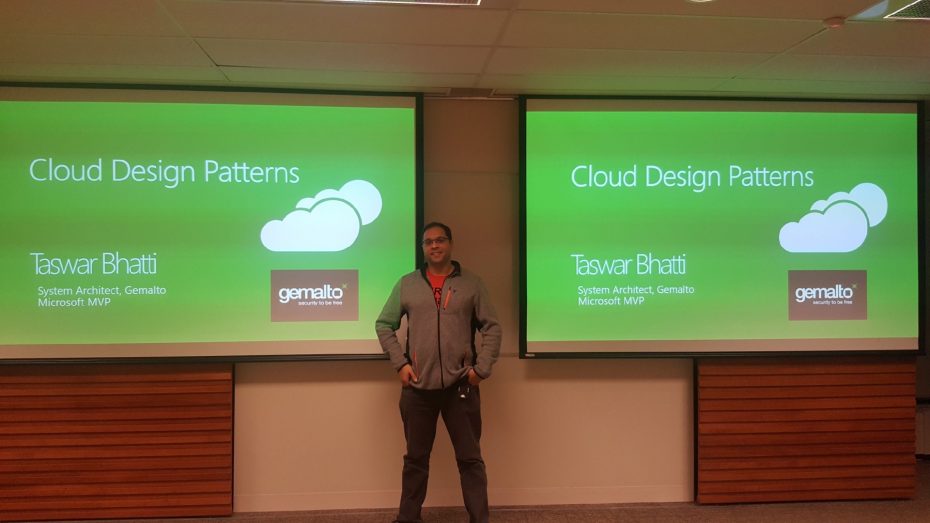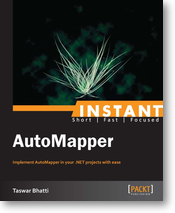This week I gave a talk on Cloud Design Patterns at the Ottawa .NET Community. I wanted to share the sides here and will most likely write on articles on the topic using real world examples. Samples in C# and node.js, in AWS and Azure.
For the talk I went through, what Cloud Design Patterns are and mainly focused on the patterns below without using any platform specifications. (i.e cloud agnostics)
- The External Configuration Pattern
- The Cache Aside Pattern
- The Federated Identity Pattern
- The Valet Key Pattern
- The Gatekeeper Pattern
- The Circuit Breaker Pattern
For each of them I also went through when you should use the pattern and when not to use it, I also provided Cloud Solutions Offering that one can use to implement the pattern.
Enjoy the slides 🙂
The Transcript:
- Agenda
- What are Patterns?
- The External Configuration Pattern
- The Cache Aside Pattern
- The Federated Identity Pattern
- The Valet Key Pattern
- The Gatekeeper Pattern
- The Circuit Breaker Pattern
- The Retry Pattern
- The Strangler Pattern
- What are Patterns?
- General reusable solution to a recurring problem
- A template on how to solve a problem
- Best practices
- Patterns allow developers communicate with each other in well known and understand names for software interactions.
- External Configuration Pattern
- Helps move configuration information out of the application deployment
- This pattern can provide for easier management and control of configuration data
- For sharing configuration data across applications and other application instances
- Typical Application
- Storing Configuration in file
- Multiple application
- Problems
- Configuration becomes part of deployment
- Multiple applications share the same configuration
- Hard to have access control over the configuration
- External Configuration Pattern
- When to use the pattern
- When you have shared configuration, multiple application
- You want to manage configuration centrally by DevOps
- Provide audit for each configuration
- When not to use
- When you only have a single application there is no need to use this pattern it will make things more complex
- Cloud Solution Offerings
- Azure Key Vault
- Vault by Hashicorp
- AWS KMS
- Keywhiz
- Cache Aside Pattern
- Load data on demand into a cache from datastore
- Helps improve performance
- Helps in maintain consistency between data held in the cache and data in the underlying data store.
- Typical Application
- Cache Aside Pattern
- When to use the pattern
- Resource demand is unpredictable.
- This pattern enables applications to load data on demand
- It makes no assumptions about which data an application will require in advance
- When not to use
- Don’t use it for data that changes very often
- Things to consider
- Sometimes data can be changed from outside process
- Have an expiry for the data in cache
- When update of data, invalidate the cache before updating the data in database
- Pre populate the data if possible
- Cloud Offerings
- Redis (Azure and AWS)
- Memcache
- Hazelcast
- Elastic Cache (AWS)
- Federated Identity Pattern
- Delegate authentication to an external identity provider.
- Simplify development, minimize the requirement for user administration
- Improve the user experience of the application
- Centralized providing MFA for user authentication
- Typical Application
- Problem
- Complex development and maintenance (Duplicated code)
- MFA is not an easy thing
- User administration is a pain with access control
- Hard to keep system secure
- No single sign on (SSO) everyone needs to login again to different systems
- Federated Identity Pattern
- When to use
- When you have multiple applications and want to provide SSO for applications
- Federated identity with multiple partners
- Federated identity in SAAS application
- When not to use it
- You already have a single application and have custom code
- that allows you to login
- Things to consider
- The identity Server needs to be highly available
- Single point of failure, must have HA
- RBAC, identity server usually does not have authorization information
- Claims and scope within the security auth token
- Cloud Offerings
- Azure AD
- Gemalto STA and SAS
- Amazon IAM
- GCP Cloud IAM
- Valet Key Pattern
- Use a token that provides clients with restricted direct access to a specific resource
- Provide offload data transfer from the application
- Minimize cost and maximize scalability and performance
- Typical Application Client App Storage
- Problem
- Valet Key Pattern
- Client App Generate Token Limited Time And Scope Storage
- When to use it
- The application has limited resources
- To minimize operational cost
- Many interaction with external resources (upload, download)
- When the data is stored in a remote data store or a different datacenter
- When not to use it
- When you need to transform the data before upload or download
- Cloud Offerings
- Azure Blob Storage
- Amazon S3
- GCP Cloud Storage
-
Gatekeeper Pattern
- Using a dedicated host instance that acts as a broker between clients and services
- Protect applications and services
- Validates and sanitizes requests, and passes requests and data between them
- Provide an additional layer of security, and limit the attack surface of the system
- Typical Application
-
Problem
- Gatekeeper Pattern
-
When to use it
- Sensitive information (Health care, Authentication)
- Distributed System where perform request validation separately
-
When not to use
- • Performance vs security
-
Things to consider
- WAF should not hold any keys or sensitive information
- Use a secure communication channel
- Auto scale
- Endpoint IP address (when scaling application does the WAF know the new applications)
-
Circuit Breaker Pattern
- To handle faults that might take a variable amount of time to recover
- When connecting to a remote service or resource
- Typical Application
-
Problem
- When to use it
- To prevent an application from trying to invoke a remote service or access a shared resource if this operation is highly likely to fail
- Better user experience
- When not to use
- Handling access to local private resources in an application, such as in-memory data structure
- Creates an overhead
- Not a substitute for handling exceptions in the business logic of your applications
- Libraries
- • Polly (http://www.thepollyproject.org/)
- • Netflix (Hystrix) https://github.com/Netflix/Hystrix/wiki
- Retry pattern
- Enable an application to handle transient failures
- When the applications tries to connect to a service or network resource
- By transparently retrying a failed operation
- Typical Application has Network Failure
- Retry Pattern
- • Retry after 2, 5 or 10 seconds
- When to use it
- Use retry for only transient failure that is more than likely to resolve themselves quicky
- Match the retry policies with the application
- Otherwise use the circuit break pattern
- When not to use it
- Don’t cause a chain reaction to all components
- For internal exceptions caused by business logic
- Log all retry attempts to the service
- Libraries
- Roll your own code
- Polly (http://www.thepollyproject.org/)
- Netflix (Hystrix) https://github.com/Netflix/Hystrix/wiki
- Strangler Pattern
- Incrementally migrate a legacy system
- Gradually replacing specific pieces of functionality with new applications and services
- Features from the legacy system are replaced by new system features eventually
- Strangling the old system and allowing you to decommission it
- Monolith Application
- When to use
- Gradually migrating a back-end application to a new architecture
- When not to use
- When requests to the back-end system cannot be intercepted
- For smaller systems where the complexity of wholesale replacement is low
- Considerations
- Handle services and data stores that are potentially used by both new and legacy systems.
- Make sure both can access these resources side-by-side
- When migration is complete, the strangler façade will either go away or evolve into an adaptor for legacy clients
- Make sure the façade doesn't become a single point of failure or a performance bottleneck.



Leave A Comment